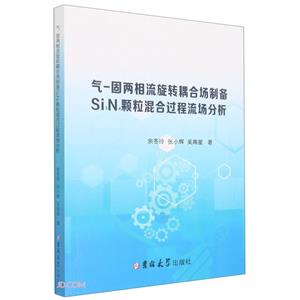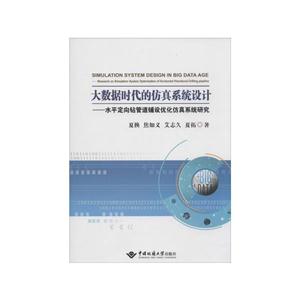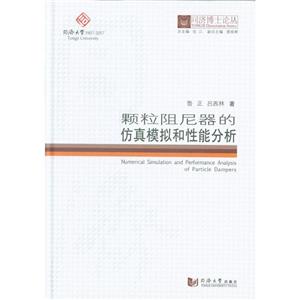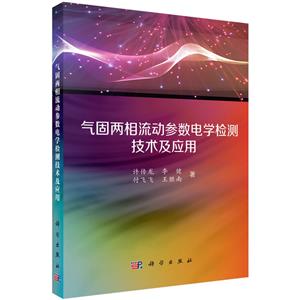
作者:李政权
页数:236
出版社:冶金工业出版社
出版日期:2023
ISBN:9787502487744
电子书格式:pdf/epub/txt
内容简介
本书结合著作者在三山岛金矿长期的工程经验,系统的总结了大型海底金矿地质隐患的探测、处理技术及监测技术,可为海底金矿的安全高效开采提供技术支撑,主要内容包括海底资源开采概述、三山岛金矿西南翼矿段工程地质评价及三维模型、应力-渗流耦合作用下的破碎矿岩物理力学特性及本构模型、海底基岩开采隐伏采空区及塌陷区分布、海底破碎矿岩及采空区充填注浆加固技术、基于多源信息融合的破碎矿岩稳定性评价、海底破碎矿岩稳定性多元立体综合监测系统及海底破碎矿岩稳定性监测数据分析。
作者简介
李政权,中共党员,博士,江西理工大学硕士生导师,2016年11月获澳大利亚蒙纳士大学博士学位,师从澳大利亚科学院和工程院两院院士、中国工程院外籍院士余艾冰教授。主要研究领域为多相流计算机仿真模拟研究,化工环保机械、冶金设备的数字化设计研究。在“MathematicalProblemsinEngineering”、“SensorLetters”等国际期刊已发表学术论文8篇,其中SCIEI检索5篇;以第一申请人申请国家发明专利5项、软件著作权4项;主持江西省省部级项目1项、创新创业项目2项、江西理工大学校级课题3项,累计参与澳大利亚科学基金委项目2项,中国“863”科技项目1项,中国国家自然科学基金3项;获2018年度中国有色金属工业科学技术二等奖1项;2019年入选江西理工大学清江青年优秀人才支持计划。此外,作为ParticulateScienceandTechnology等国际知名期刊的同行评议审稿人一直参与期刊论文评审。科研获奖:(1)废润滑油催化裂解绿色智能制备轻柴油示范工程,中国有色金属工业科学技术奖二等奖,2018年12月科研项目:(1)江西省教育厅科学技术研究项目(编号:GJJ180426),基于CFD-DEM的固液搅拌槽内流体力学性能的数值模拟研究,20191-202112,3万人民币,在研,主持。(2)江西理工大学博士人才引进基金项目(编号:3401223337),数值模拟技术在工业规模循环流化床中的应用研究,20181-202012,10万人民币,在研,主持。
(3)澳大利亚AustralianResearchCouncil(ARC)项目(编号:IH140100035),ARCResearchHubforComputationalParticleTechnology,20151-201912,5000万元,在研,参与(4)澳大利亚AustralianResearchCouncil(ARC)项目(编号:LP130100365),Fundamentalstudiesofmultiphaseflowandseparationperformanceofnaturalmediumcyclonesforrecoveringwastecoal,20131-201612,225万元,已结题,参与软件著作权:(1)变径管气力输送系统仿真模拟平台V1.0,2020SR0916482,2020年8月(排名第一)(2)工业规模循环流化床仿真模拟平台V1.0,2020SR0916771,2020年8月(排名第一)(3)双套管气力输送系统仿真模拟平台V1.0,2020SR0923097,2020年8月(排名第一)(4)反应釜搅拌过程仿真模拟平台V1.0,2020SR0922760,2020年8月(排名第一)
目录
Background
Chapter
2 Literature Survey
2.1
Introduction
2.2
Complex pipe systems
2.2.1
Industrial scale circulating fluidized bed (CFB)
2.2.2
Long-distance high-pressure dense-phase (LHD) pneumatic conveying system
2.2.3
Bypass pneumatic conveying system
2.3 Numerical
methods
2.3.1 Two
fluid model (TFM)
2.3.2
Discrete element method (DEM)
2.3.3
Coupling of DEM and CFD
2.3.4
Coarse-grained (CG) /parcel CFD-DEM approach
2.4
Summary and proposed research
Chapter
3 Simulation of Industrial Scale CFB Using Coarse Grained CFD-DEM Model
3.1
Introduction
3.2
Experiments and simulation conditions
3.2.1
Backgrounds
3.2.2
Experimental set up and measurements
3.2.3
Mathematical model
3.2.4
Simulation conditions
3.3 Results
and discussion
3.3.1
Axia] pressure gradient
3.3.2
Solid velocity and concentration
3.3.3
Particle cluster and solids back mixing
3.3.4
Analysis of the interaction forces
3.3.5 Effects
of different model particle sizes
3.3.6 Effects
of different solid mass flow rate
3.4
Conclusions
Chapter 4
Computational Study of Gas-solid Flow in LHD Pneumatic Conveying Systems
4.1
Introduction
4.2
Mathematical model
4.2.1
TFM
4.2.2
CFD-DEM
4.3
Simulation conditions
4.4 Model
validation
4.5
Results and discussion
4.5.1
Pressure drop
4.5.2
Gas velocity
4.5.3
Solid velocity
4.5.4
Forces governing the motion of solids
4.6
Conclusion2
Chapter 5
Numerical Study of Gas-solid Flow in Stepped Pipe with Inserts
5.1
Introduction
5.2
Mathematical model
5.2.1
TFM
5.2.2 CFD-DEM
5.3
Simulation conditions
5.4 Results
and discussion
5.4.1
Single pipe with inserts
5.4.2 Stepped
pipe with inserts
5.4.3
Different shape of inserts
5.5
Conclusions
Chapter 6
Particle-scale Modelling of Gas-solid Flow in Bypass System
6.1
Introduction
6.2
Mathematical model
6.3
Simulation conditions
6.4 Results
and discussion
6.4.1
Grid study
6.4.2
Pressure drop
6.4.3
Gas velocity
6.4.4
Solid velocity and general flow pattern
6.4.5
Forces governing particle motion
6.5
Conclusions
Chapter 7
Effects Geometrical Parameters on the Gas-solid Flow in Bypass System
7.1
Introduction
7.2
Simulation method
7.3
Simulation conditions
7.4 Results
and discussion
7.4.1
Effect of flute spacing
7.4.2
Effect of small internal pipe diameters
7.4.3 Effect
of orifice path diameter
7.5
Conclusions
Chapter 8
Summary and Future Work
8.1
Summary
8.2
Future work
References















